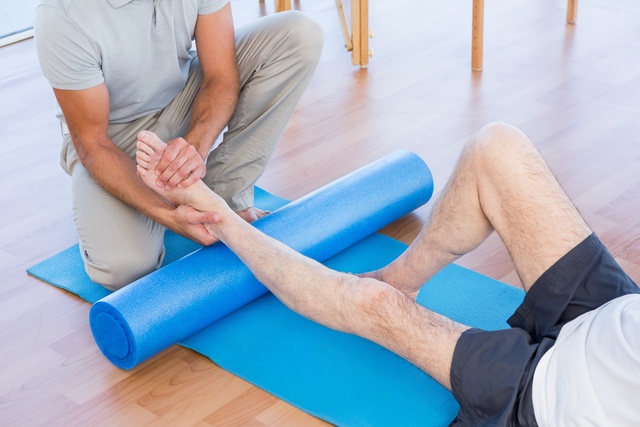Foam rollers are handy tools that can help relieve pain and soothe sore muscles. Whether you’re feeling sore after an intense workout, or you deal with chronic muscle pain, you can start using foam for exercise equipment in the comfort of your home. Not only can rolling out with foam help release any muscle tightness, but it can also help increase your joint range of motion. In this post, we’ll walk you through the many uses and benefits of foam rolling. We’ll also share a few exercises for you to try, and show you where you can find the best foam roller on the market!

Benefits of Foam Rolling
There are many different uses for an exercise foam roller, and the benefits can vary depending on the person. For that reason, it’s always best to consult a physician before beginning any new type of exercise program, including foam rolling. Generally speaking, foam rolling has proven to alleviate soreness, aid in muscle repair/recovery, reduce inflammation, increase blood flow, help prevent muscle injury, increase range of motion, and promote relaxation. Foam rollers are used in a variety of places, including medical offices, chiropractic practices, gyms, and fitness centers. But you don’t have to go to any of these places to use a foam roller – you can easily purchase one for yourself to use at home, or to take with you to use after a workout.
Exercises For Foam Rollers
Now that you know a bit more about these foam cylinders and their uses, let’s get into the exercises. If you’re trying to alleviate sore muscles from exercising, you can complete these movements before your workout as a warm-up, or afterward as a cool-down. If you’re simply trying to manage your everyday pain, you can do these exercises anytime you need to. Doing each exercise for 30 seconds can help relieve any tenderness you may be dealing with. Here are a few simple movements you can complete, each targeting a different muscle or area of the body:
- Quads
Rolling out the quads is a great place to start, especially for people who work sedentary desk jobs. To do this, start in a forearm plank position with the roller placed under your quads. Use your upper body and core to brace yourself, then slowly roll down the roller until it hits right above your knees. Start rolling in the opposite direction until the foam reaches your hip flexors. - Upper Back
Focusing on the upper back could be a serious game-changer for those struggling with constant back pain. Start by positioning the foam roller underneath your lower back and lying down on it. Bend your knees and keep your feet flat on the floor while either crossing your arms or keeping them down at your sides. Then, lift yourself into a bridge position and begin rolling yourself up and down, starting at the lower neck and stopping around the middle of your back. - Calves
Many people deal with tight muscles in their calves, which can be extremely painful, especially if you live an active lifestyle. To roll out your calves, begin by sitting on the floor with your legs extended and the foam roller underneath your calves. Lift your body with your arms so your weight is placed on the roller, and cross one leg over the other to add pressure. Roll your leg back and forth on the foam, using your arms to move your body forward and backward. Cross your legs the other way and repeat the same movements on your other calf.
It’s important to note that foam rolling can be painful at first, especially if you’ve never done it before. You’re actively targeting sore muscles, so you’ll probably notice that some areas are more sensitive than others. If you come across a painful spot while rolling, make sure you ease into it slowly. The sensitivity should decrease, but if it doesn’t, don’t continue to roll that area.
Ease Your Pain With A Foam Roller
Ready to start implementing foam rolling into your exercise routine? At Foam Factory, Inc, we offer the perfect exercise foam roller for all your needs! The polyethylene cylinder roller can be used for a variety of purposes, from isolating and toning problem areas to massaging and helping muscles recuperate after being worked too hard. Choose from two sizes: Standard (5” Dia. x 11”) or Long (5” Dia. x 70”), and two colors (blue or charcoal). They’re great for relieving aches and pains, and they’re priced affordably, so you can alleviate your pain without breaking the bank.

